Subscriber Benefit
As a subscriber you can listen to articles at work, in the car, or while you work out. Subscribe NowMain Street is the center of the action. It’s where people gather and where business takes place.
A cooperative of central Indiana communities wants to expand the impact of Main Street via walkable districts to attract residents and boost innovative development. Think the Arts & Design District and Midtown in Carmel, the Nickel Plate District in Fishers, or Mass Ave and the Bottleworks District in Indianapolis.
The Central Indiana Regional Development Authority is putting Main Street front and center in its bid for a piece of the Indiana Economic Development Corp.’s second round of Indiana Regional Acceleration and Development Initiative (READI) grants totaling $500 million.
CIRDA plans to submit a $75 million grant application by the IEDC’s Feb. 23 deadline with the theme “Main Street Matters,” to invest in walkable and connected districts to link arts, culture and recreation.
The IEDC will announce READI 2.0 recipients in April and begin working with regions in May to identify specific economic development and quality-of-place projects.
The READI 2.0 application is one of the first major initiatives for CIRDA, formed in 2022. The group has also applied for a $500 million pollution-reduction grant from the U.S. Environmental Protection Agency and is working on road-funding legislation and discussing the long-term water needs of central Indiana.
CIRDA—led by Chair and Fishers Mayor Scott Fadness, Vice Chair and Noblesville Mayor Chris Jensen and Executive Director Jennifer Messer—started with just eight communities in two counties, two years after Senate Enrolled Act 350 authorized Indianapolis-area counties and municipalities to form a regional development authority. The Legislature in 2015 allowed regions to create RDAs, but lawmakers must approve each individually.
Now, CIRDA encompasses 25 cities and towns, plus Hamilton County; that represents more than 80% of the population in central Indiana. Other RDAs cover the northern, southern, northeastern and southwestern regions of the state.
Communities that have joined CIRDA are Lebanon and Zionsville in Boone County; Bargersville, Franklin, Greenwood and Whiteland in Johnson County; Carmel, Fishers, Noblesville and Westfield in Hamilton County; McCordsville and New Palestine in Hancock County; Avon, Danville, Pittsboro and Plainfield in Hendricks County; Anderson and Elwood in Madison County; Beech Grove, Cumberland, Indianapolis, Lawrence and Speedway in Marion County; and Martinsville and Mooresville in Morgan County.
“That in itself is no small feat,” Fadness said. “As of five years ago, the entity did not exist, so to come that far in a short period of time, it’s been pretty extraordinary.”
The READI 2.0 grant would have a “direct and positive” impact, Fadness said.
“If you look at population growth, innovation, economic development, educational attainment, all those things, if you’re looking at the heat map, the heart of most of that is happening in these Main Streets,” Fadness said.
‘Value of collaborating’
CIRDA is the most significant effort yet at cultivating regional cooperation in central Indiana, but getting communities on the same page was not always easy.
Fadness said suburbs around Indianapolis grew so quickly that some leaders did not want to think about regional frameworks.
“The challenging part was, most of these cities had grown into their own kind of independent communities in their own right,” he said. “And so, the challenges that came with it were now, all of a sudden, you have suburban communities that may or may not believe that they need to be good partners with other cities or may or may not believe in the value of collaborating with Indianapolis.”
Matt Greller, CEO of AIM, formerly the Indiana Association of Cities and Towns, said central Indiana was “woefully behind other areas of the state” when RDAs began to take off. With CIRDA in place, he said, the region has done “a complete 180.”
“You’ve got suburban cities working with the central city. You’ve got small towns working with big cities,” Greller said. “You’ve got Democrats and Republicans working together. So, to me, that is the biggest outcome that probably outweighs the grant money and READI money that is likely coming their way in the future.”
In the late 2000s, former Indianapolis Mayor Greg Ballard and former Westfield Mayor Andy Cook created the Central Indiana Conference of Elected Officials. The group, later headed by Fadness, hosted lunches where leaders could discuss issues impacting their communities.
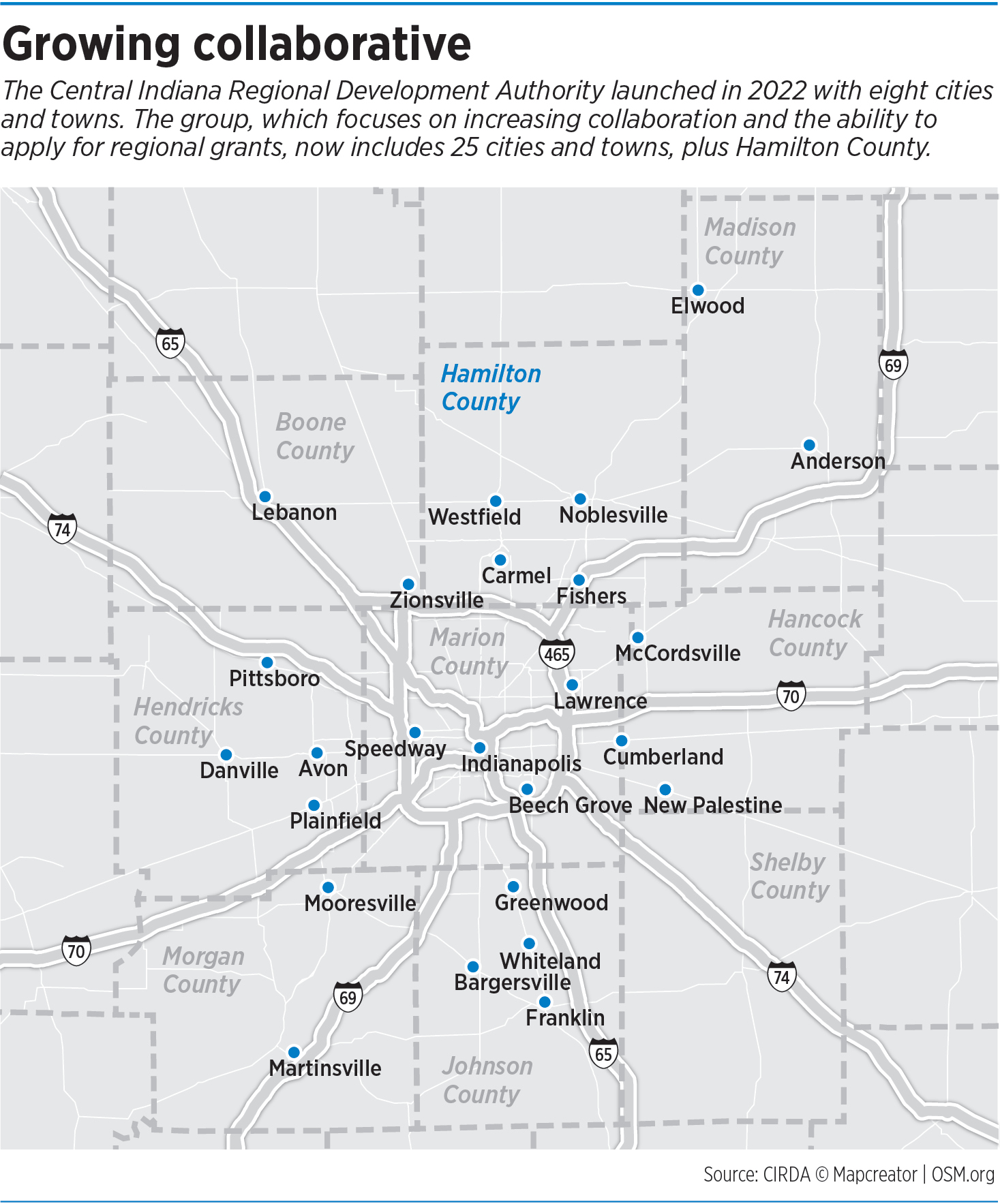 A previous RDA in central Indiana included Carmel, Greenwood, Indianapolis and Westfield. It formed in 2015 in an effort to win millions of dollars in state grants for the IndyGo Red Line, shortly after the General Assembly approved the formation of RDAs.
A previous RDA in central Indiana included Carmel, Greenwood, Indianapolis and Westfield. It formed in 2015 in an effort to win millions of dollars in state grants for the IndyGo Red Line, shortly after the General Assembly approved the formation of RDAs.
Fadness and Jensen are regular partners on regional projects and have been two of the most outspoken proponents of regionalism in central Indiana.
Jensen said central Indiana leaders need to understand they are not competing against one another. Rather, they are competing against some of the fastest-growing cities and regions in the country.
“I think it’s essential for us in central Indiana to realize that we are in global competition every day with Nashville, with Minneapolis, with Denver, with Columbus [Ohio],” Jensen said. “That’s who we’re competing against economic-development-wise and branding-wise.”
Regions that win are the ones that attract talent and jobs of the future, he added.
“It was essential that we get out of our own way and get out of our own lane and realize that we are all on this freeway together and we need to be rowing in the same direction,” Jensen said.
Plainfield Town Council President Robin Brandgard agreed.
“We have to work with those around us, and together we can move forward better and faster than you can by yourself,” Brandgard said. “[Plainfield] benefits from having the chance to talk to our peers in other locations. When there’s something that affects us all, we can work together to correct it.”
‘We will grow the pie’
Central Indiana community leaders are eagerly waiting the outcomes of their CIRDA’s READI 2.0 and EPA Climate Pollution Reduction Grant applications. The EPA grant winners are expected to be announced this summer.
Indianapolis Mayor Joe Hogsett cited the planned redevelopment of Circle Centre Mall and energy-efficient building conversions as projects that could receive funding from CIRDA’s grant applications.
In December, Hendricks Commercial Properties LLC, the Wisconsin-based firm behind Bottleworks District, struck a deal to buy most of Circle Centre from its original investors, with plans to spend $600 million over the next decade to transform it into an open-air, pedestrian-focused campus with housing, offices and shopping.
Hogsett added that CIRDA’s impact is helpful to communities large and small.
“We know that by working together, we will grow the pie of economic prosperity and bring more federal funds back to the state of Indiana,” Hogsett said in written remarks.
All 92 counties in Indiana received a portion of the original READI funding that was made available in 2021 using $500 million in federal funding from the American Rescue Plan Act. Last year, lawmakers approved Holcomb’s request for $500 million to launch the second phase of the READI program, which will use state instead of federal dollars.
The original READI funds supported everything from housing developments and public parks to public infrastructure and workforce development programs, according to the IEDC. That covered more than 360 projects, including the Hendricks Live! performing arts center in Plainfield, The Farmers Bank Fieldhouse in Lebanon and an expansion of the Nickel Plate Trail.
“When I talk to my counterparts around the country, their eyes get big, and they can’t believe that something like that is happening at the state level and working collaboratively with cities and towns and counties,” Greller said.
‘A seat at the table’
The EPA Climate Pollution Reduction Grant program provides grants to communities to develop and implement plans to reduce greenhouse gas emissions and other air pollution.
Fadness said CIRDA leaders considered how the group’s READI 2.0 and EPA grant applications can impact cities that have struggled in the post-industrial economy.
“It is not lost on us trying to think through how we can take these big opportunities and translate those into meaningful wins for an Elwood or an Anderson,” Fadness said. “When we’re crafting our application for the EPA, we’re thinking about, ‘Well, how does a post-industrial city benefit from these EPA dollars?’”
Elwood Mayor Todd Jones said being part of CIRDA is a “tremendous opportunity.” Like many cities in north-central Indiana, Elwood has struggled for decades; its population dropped from 11,793 in 1960 to 8,410 in 2020, according to the U.S. Census Bureau.
However, it has seen positive changes in recent years.
Elwood Golf Links, which had been closed for nearly a decade, reopened as a municipally owned golf course in 2017. A $25 million housing development called Bison Ridge Estates was built alongside the golf course.
More housing is now available in the city’s central business district. The former Leeson’s department store building reopened in 2019 as Lofts at Leeson’s, an affordable housing development for people age 55 and over. And the 72-unit Tin Plate Apartments at Veterans Park opened last year on the northeast side of downtown.
Jones said being a CIRDA member means Elwood gets a say in decisions that are made in central Indiana.
“A lot of times, we hear, ‘Where’s Elwood?’ from individuals outside the community and by being a part of CIRDA, it gets us a seat at the table to showcase our assets and partner with neighboring communities to enhance the quality of life not only for the residents of the city, but also for people coming to visit,” said Jones, a three-term Democratic mayor.
If CIRDA’s READI 2.0 application is approved, Jones said, he plans to direct funding toward a 19-acre youth sports complex near Elwood Junior-Senior High School on the north side of town.
“By having the influx of people coming to town for the sports complex, it’s going to generate all types of opportunities for not only our mom-and-pop Main Street businesses but all of our businesses,” Jones said.
Fadness said CIRDA’s goal over the next two years will be to work with the private and philanthropic sectors. He hopes to grow relationships with Indiana University Health, Rolls Royce, the Indianapolis Motor Speedway, real estate developers and local colleges and universities.
“If we’re going to transform our region and capitalize on the opportunities that we have, then we’ve got to come into alignment with the private sector, our business community and the philanthropic sector,” he said.•
Please enable JavaScript to view this content.


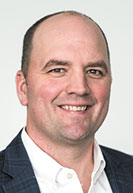
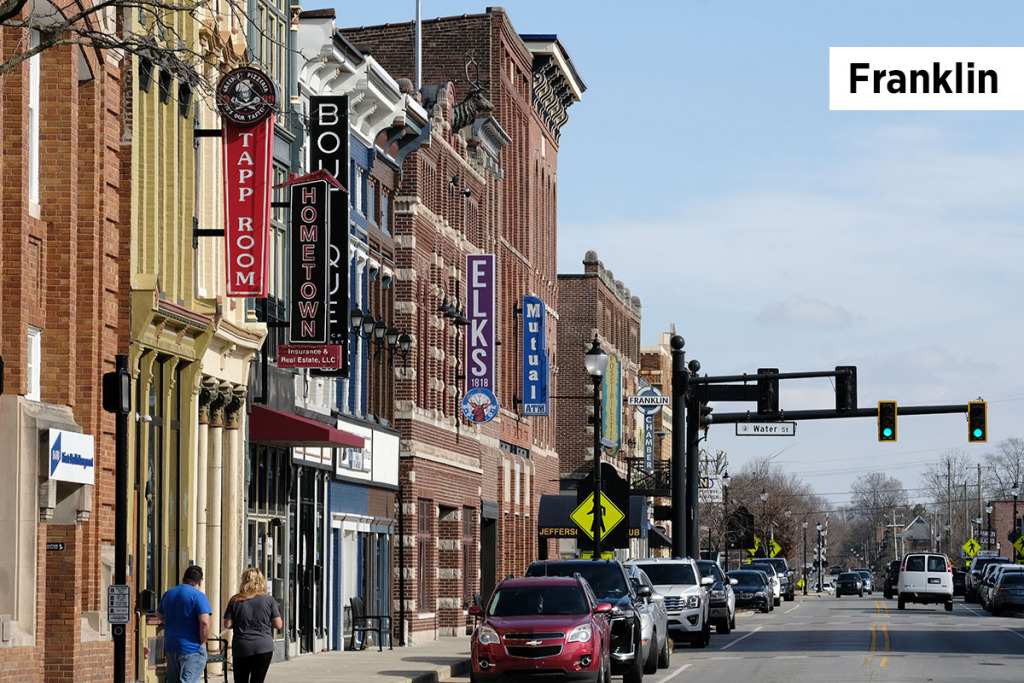
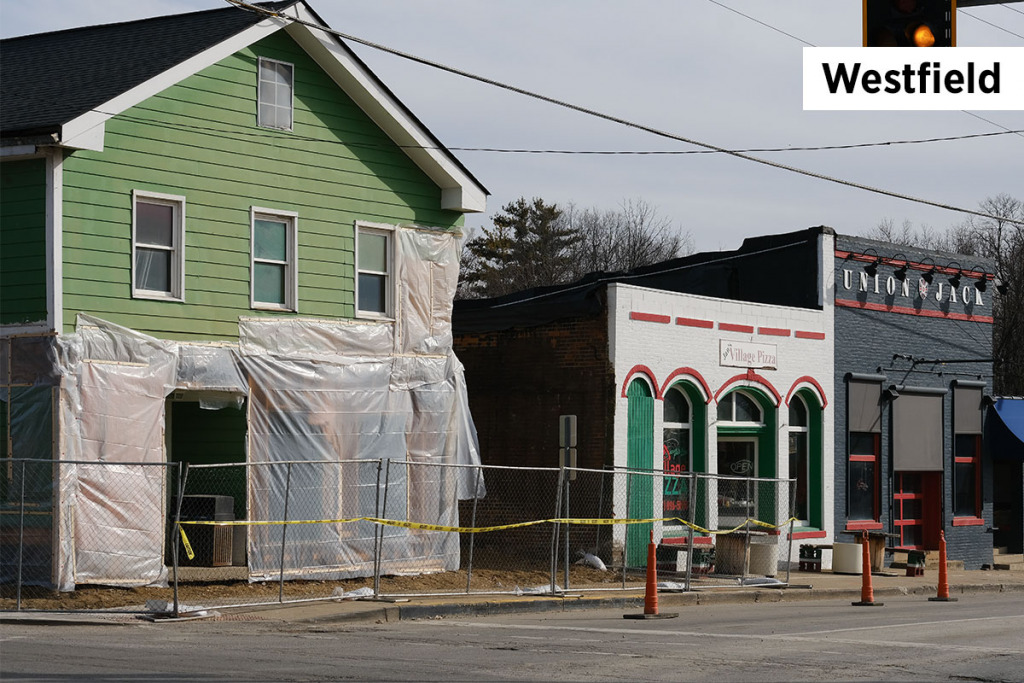

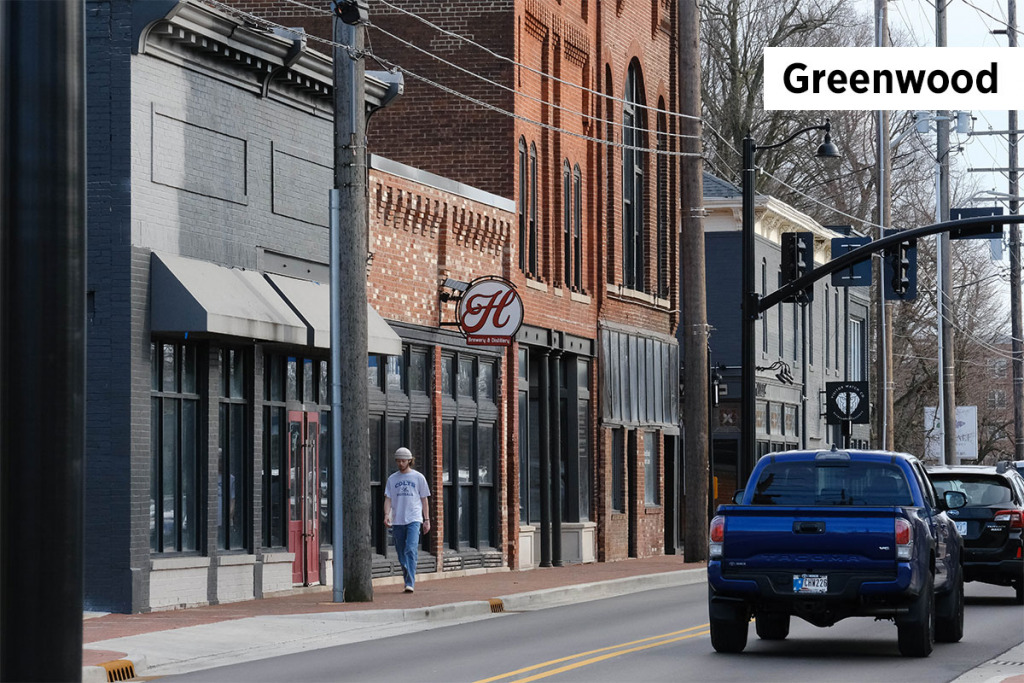
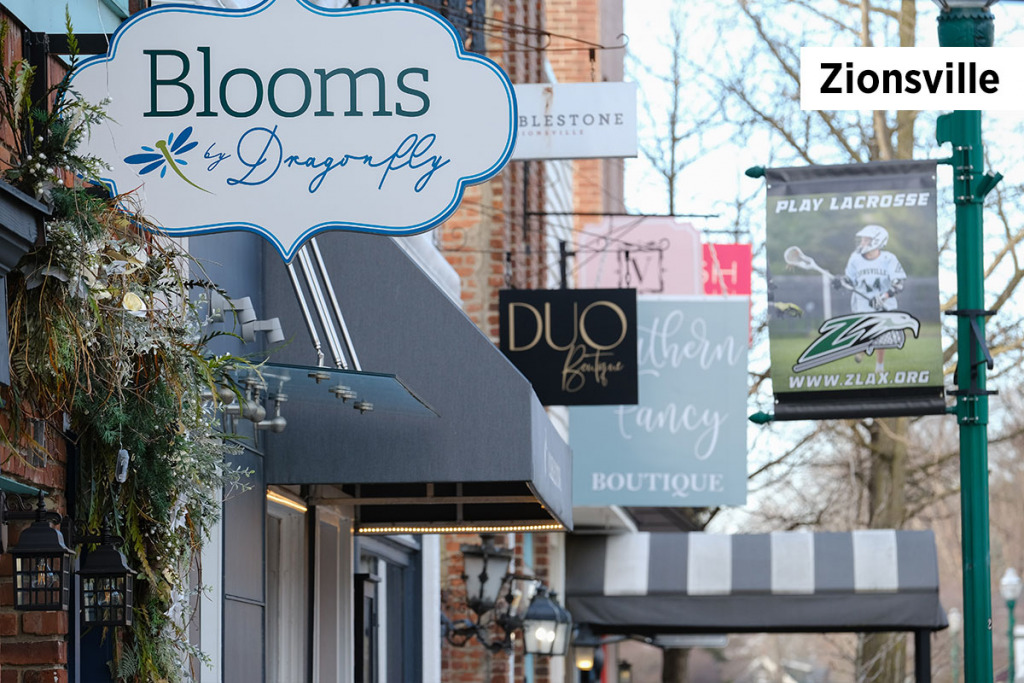
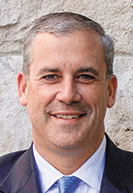
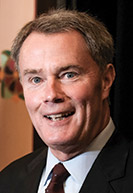
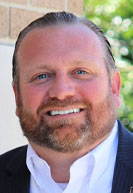
This is a step in the right direction, but The State should work more broadly to change incentives such as to help Main Street.
For example, The State could adjust the tax code in zip codes that have adopted land-use best practices.
Don’t forget Shelby Street.
Keep in mind all the near east side developments added to the city.
A sidewalk artery from Washington to Fountain Square will be positive cultural and economic impacts.
CIRDA is a great step towards a truly regional approach to civic development.